The Groundwork to Establishing Pack Structure with Adult Dogs
A thorough guide to becoming the leader for your dogs
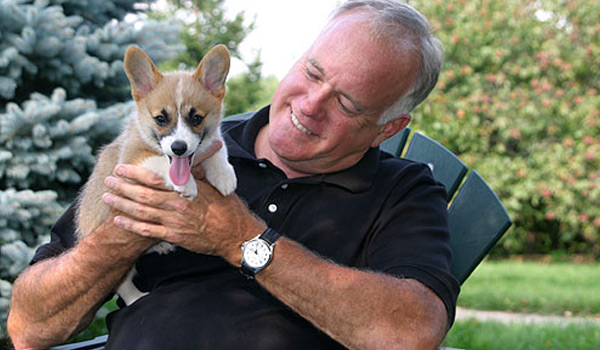
After 50 years of training dogs and over 30 as a professional dog trainer, there are a few sayings that make a lot of sense to me:
- "Dogs don't know how to be good unless we show them."
- "You create your dog's value system."
- "People don't give birth to a brat!"
- "You can feed, water, and love your dog and he will like you, but he very well may not respect you."
- "Dogs know what you know and they know what you don't know."
This article details how I establish pack structure with an adult dog. This is especially important with dogs that are predisposed to becoming dominant or aggressive.
The information you are about to read is the way we introduce new dogs in our home here at Leerburg. It also explains the way I have gained control over some very tough and dangerous dominant dogs that I have owned over the past 45 plus years of breeding, owning, and training police service dogs.
Becoming a pack leader involves adopting the attitude of a pack leader. It does not involve aggression towards a dog, it doesn't involve rolling him on his back, hard leash corrections or even raising your voice to the dog. It involves adopting a leader's attitude. This is something that new dog owners must learn how to do.
Every dog knows a leader when he is in the presence of one. They can sense a leader. They don't need leash corrections to consider their owner a pack leader. Inappropriate corrections often result in a dog looking at the offender with contempt rather than respect.
There is an old saying: "Dogs know what you know, and they know what you don't know". This article is going to explain how I show my dog "what I know". It is also going to explain how I establish responsibility and limits to the relationship I build with my dogs.
The content of this article will mean more to you if you take a minute and read the article I wrote titled My Philosophy of Dog Training.
Love is Not Enough
The vast majority of behavioral problems are caused by mistakes that were made in the basic foundation of how relationships were set up between owners and their dogs.
I call these "mistakes in groundwork" and I define groundwork as "the work which involves establishing pack structure with a new dog."
Many people think that loving a dog is enough to form a good relationship. These people are dead wrong.
Unconditional love is never enough. Love has conditions and boundaries along with mutual trust and respect. Unless humans deal with the respect issue in love they will never have a relationship with a dog in which the dog looks at them as a pack leader.
What is "Groundwork"?
When I talk about groundwork, I am not talking about training a dog to come, heel, or sit. I am talking about teaching the dog how I plan on living with it. I am talking about how I establish pack structure with a new dog.
The way we handle a dog in our day-to-day life will teach that dog a great deal about yourself, your pack, and your pack rules.
How and when I do anything with the dog—whether it is grooming, feeding, or exercising him—along with my general attitude when I am around him will tell the dog volumes about our future relationship.
I call these the first steps to establishing a family pack structure.
When we bring a new dog into our home, the decisions we make on how we live with that dog will have long-term implications on what kind of relationship we develop with the dog.
"You may not think of yourself as a dog trainer, but the fact is every time we are around our dog, we are teaching the dog something. The question is 'Are we teaching them something good or something bad?' Some people don't know the difference."
Hopefully this article along with the resources from the Leerburg website will help people start off on the right foot.
The Solutions to Most Behavioral Problems
The solution to almost all behavioral problems lies within changes owners need to make in the way they live with their dogs.
Unlike humans, dogs live in the present. Human psychologists almost all focus on the past to find answers to current problems. This is fine for a human but it's a mistake to think that this is how to fix a pack animal.
Don't get me wrong, I am not saying that modifications to training don't need to be made for a dog that was truly abused. The fact is the term "abuse" is used far too often when trying to explain behavioral problems.
I always tell pet owners that I never change my philosophy of how to live with or train a dog just because it had a bad experience in the past.
It's Never Too Late
I want to make a point here and that is if you currently have a problem with your dog it's never too late to consider making changes on how you live with your dog.
If you have a problem, it's imperative you make changes because the way you have been living with your dog has allowed these problems to develop.
Never forget what I said: Dogs live in the moment and they miss nothing. The old adage about "not being able to teach an old dog a new trick" is just that—bad, old information.
So it's never too late to turn things around. It's never too late to start to do things correctly. You just need patience and confidence in what you are doing to fix your problems.
Everyone Has an Opinion
You will quickly learn that everyone has an opinion on how to raise and train your dog. You only need to ask your mailman, your barber or your relatives how to solve your dog training problems.
If you go to your local Pet Smart warehouse and talk to their trainers or look in their book section you will see stacks of conflicting advice.
The problem is that most people (including a vast majority of instructors) don't have enough experience to offer sound advice on dog training—much less pack structure advise. This results in a lot of bad information being passed out.
You can go to my web site and read my biography on the experience I bring to the table when I talk about dog training.
What Breeds Need Groundwork
This information in this article applies to dogs of all breeds and ages.
Every breed of dog needs good groundwork. Dog training is not breed-specific. It's temperament and drive-specific.
Every new dog needs to go through a solid groundwork program no matter how old the new dog is, no matter what breed the new dog is, no matter how big or small the new dog is, no matter where the dog came from or what its background is, and finally no matter what his current level of training is.
Groundwork exercises help get dogs under control. They provide new owners experience in learning to handle and control character traits (both learned and genetic) the new dog has.
These groundwork exercises also result in owners having more confidence in handling their dogs. There is a saying I use "the more groundwork, the more experience, the more confidence every new dog owner will have."
Many Rescue Dogs Genetically Have Faulty Temperaments
Many people who rescue dogs are told their new rescue dog has been abused, when in fact this is not the case. Many, many, many, dogs are turned into humane societies because they have genetically faulty temperaments or because the dogs lived in homes that did not promote a healthy pack structure.
It's important to remember that dogs with faulty temperaments are also dogs with pack drives. They just react to the "rank" portion of their pack drive differently than well-adjusted house dogs do.
Dogs with faulty temperaments often need sound pack structure training more than normal dogs.
I also need to point out that many dogs with temperament issues have these issues because of people who own animals and prefer to treat them anthropomorphically (like a human child) rather than as a pack animal and a member of their family pack. This causes huge problems.
Some of these people come to their senses when their dogs develop serious dominance problems. Others simply turn the dog into animal shelters, or worse yet, they have the dogs put to sleep.
The First Weeks
When I bring a new adult into our home, I socially isolate the dog for some time. With some dogs, this may only be for 3 or 4 days. With dominant dogs, it can be weeks.
Social isolation means that I take care of the dog's basic needs: feeding, water, walking, and providing a clean place to sleep, but nothing else. I don't pet the dog, I don't play with the dog, I don't talk sweet to the dog. I act like it is not there. I act aloof to the dog.
During this social isolation period, the only time the dog is out of the crate while in the house is when it is on its way outside.
Now I need to say that this is not what we do with our puppies. We use dog creates and ex-pens with puppies and that work is detailed in our DVD titled Your Puppy 8 Weeks to 8 Months. We also have a very detailed article I have written on How to Socialize Your Puppy. Many of the concepts apply to both puppies and adult dogs, but occasionally, puppies are treated a little differently. This article is mainly directed towards adult dogs.
Always on a Leash
The instant I let the dog out of the crate, I hook a leash onto him so he is always under complete control. During this period, I never have the dog off-leash—not even when I walk him from the crate to the door.
When the time comes that I do allow him more time out of the crate but he is always on a leash. If I watch TV, he is on a leash and laying by my feet. If I work on the computer, he is on a leash and tethered to my desk. He does not get free access to the house for months.
When a house dog starts to misbehave in the house (chew or mark), it needs to go back in the crate and stay on a leash when it's in the house. Being loose in the house is an earned privilege. Pet owners often forget this.
It becomes crystal clear to the dog that I am in total control of its life and its environment. I can't overemphasize how important that is to a pack animal.
I don't need to give one correction during this entire time for the dog to understand that I am the person who controls his life.
While formal training on an adult dog may not start for several weeks or even a month there is a lot that the dog can learn while you wait.
The dog needs to learn that this is his new home and that I am his new pack leader. I want to begin the bonding process before I take it out and expect it to do formal obedience work.
Keeping the dog on a leash and controlling every aspect of its life allows for the opportunity to show that I am fair and that I don't issue unwarranted corrections. Learning to be consistent and fair goes a long way towards forming a respectful two-way relationship.
During this initial period, I never push myself on a new adult dog. I go out of my way to act aloof to the dog. I make the dog feel like I don't care about him. I act like taking him outside is a job and I would rather be in Florida or anywhere other than spending time with him. My goal is to teach him that he must "earn my affection and respect."

So during these first few weeks, I take care of the dog by feeding him, giving him water, and taking him out to exercise. However, I don't act all gushy over him. When I take him for a walk, I don't play with him. I simply walk him and put him away.
xThe dog senses an aloof attitude from me. Dogs know that pack leaders are aloof. You don't see an alpha wolf run around acting like a happy puppy in front of his pack members.
Now with puppies, this is obviously different. But that is all covered in my article The Groundwork to Becoming Your Puppy's Pack Leader.
These concepts are all dealt with in my Dealing with Dominant and Aggressive Dogs Online Course.
The Dog Crate
If you are going to do groundwork on your dog, the easiest way is with a dog crate.
If your goal is to have a house dog, it needs to start its life in your home in a dog crate. In the beginning, many dogs may not like the crate but they will learn to accept it.
We keep a bowl of all-natural dog treats near our dog crate. Every time I ask the dog to go into the crate, I toss a few treats in first. I also feel it should be fed its normal daily rations in the crate.
Some dogs raise holy heck when they are first put in a crate. Giving them a cow's knuckle bone or one of our treat balls takes their mind off being confined in the crate.
Putting a sheet over the crate for a while, so the dog cannot see out, also helps. Screaming and hitting the dog do nothing but increase the dog's stress and confirm that being in the crate only brings bad things.
The bottom line is that the more a dog barks and screams the longer it must stay in the crate. This article is not about house training. I have written extensively about housetraining on my web site. If you wish to learn more about housetraining, view our article titled Problem-Solving Housetraining a Dog.
What Kind of Crate?
We like to use plastic airline-type crates to keep our dogs in. They contain the hair better than wire crates and if there is a mess in the crate, they are easier to drag outside and hose down.
I used to recommend wire crates. Over time I changed my mind on them for most people. Simply put, wire crates aren't necessary unless your dog has learned how to break out of an airline crate. With wire crates, you can add extra security by using clips (like those used on dog leashes) to keep the crate door closed.
With that said, once a dog has learned to break out of an airline crate or one of these wire crates the only option left are the custom-built aluminum crates we sell. They are not cheap but no dog will ever break out of them and they last a lifetime.
Petting or Praising the New Dog
In the social isolation period, I never pet my new dog. After that, I pet the dog but only if it does something I have asked it to do and I never overdo it.
I am also very careful about when I pet him and what I pet him for. In other words, I don't just walk up to the dog and start to pet him.
The dog must do something to get a word of praise or a pat on the shoulder. He must sit, or he must wait for me when I tell him to wait at a door or gate, and then I will praise him.
Only pet your dog on your terms—never when the dog wants to be petted!
What I don't do is pet the dog when he wants to get petted. If the dog comes to me and tries to push his head under my hand to get petted, I verbally scold him and send him away. If it's a strong dominant dog, I ignore him and act like he is not there.
Demanding to be petted by an adult dog is a sign of dominance. The dog never decides when it's time to get petted—the pack leader makes those decisions.
This is a huge pack drive issue. The Alpha member of the pack goes to lower-ranking members and expects to be groomed.
Playing with My Dog
Following in the concept of being aloof for the first weeks, I don't initially play a lot with my dog. Playing is an earned exercise and when I withhold it for a period of time. It means more to the dog when I finally do start to play with him.
I don't give new dogs toys. For one thing I want them to have eyes for me. I want them to look at going for walks with me as their enjoyment in life.
Toys can be triggers for aggression. Since I don't want to fight a dog to take his toy away I simply don't give a new dog any toys.
I have a philosophy of having to fight with my dog over a dominance issue. That is I never pick a fight with a dog that I will lose. If more people followed that line of thinking there would be a lot fewer dog bites in this country.
When I eventually allow the dog to have a toy I teach him that ALL TOYS are MY TOYS and I allow him to play with MY TOYS. At the end of a play sessions I take MY TOYS away and put them up. The way I teach that is the subject of a different article.
For now it's just important to point out that you will never find a basket full of toys sitting around my home. We keep our toys in our "dog training equipment bag," which is something that I recommend all dog owners have.
Any playing I eventually do with my new dog is always done on a long line. The dog is never at liberty to run off on his own. Being off leash would go against the concept of you having control 100% of the time.
In time we may graduate from our 33 foot line to a 20 foot lines, a 6 foot Amish leash, or for our family, a remote collar.
The Family Petting and Playing with the New Dog
This may fly in the face of people who want a family dog but the fact is in the beginning I never allow family members to pet or play with a new dog.
My primary goal is to establish a family pack. I can best do this by firmly inserting myself as pack leader. once that is accomplished I can easily step in to help establish the rank of other family members within the pack.
Kids & Dogs
I have written very detailed article on Preventing Dog Bites in Children. This section is a very short overview.
My position on dogs and children is that kids as young as 9 can learn to handle (not train) a dog that is already trained but it should only be in the presence and under the supervision of the primary trainer (husband or wife).
Children younger than 7 are not mature enough to assume the responsibility for handling any dog. They can play around a dog but only in the presence of an adult pack leader.
Dogs must learn that babies and very young children are always off limits. Dogs are not allowed near them and are certainly never allowed to play with them. It's too easy for accidents to happen and when accidents happen with adult dogs and small children they are usually traumatic.
So my words of advice are to err on the side of safety and follow these guidelines.
Children as young as 11 can learn to train a dog but the training should be in the presence of an experienced trainer.
The question often comes up by new pet owners about how to teach the new dog that the small child is a higher rank in the family pack.
My answer is that you don't try do that. As pack leader you simply establish a rule that the dog is not allowed near the young child, and if it breaks that rule it suffers serious consequences.
I know it's hard to tell children that they cannot have contact with a new dog, but with this said, the dog has to make its bond with you before it makes its bond with the rest of the family.
In my Basic Dog Obedience DVD (also available as a course), I explain the rules on how to introduce dogs to children.
Non-Family Members Petting My Dog
I seldom allow people from outside my immediate family to touch or pet my dog.
These people are not pack members and as such, my dog has no need to be petted by them. I wrote an article and did a podcast titled Who Pets Your Puppy Or Dog, you may want to read or listen to it. The same applies to my adult dogs.
I get many emails from people who misunderstand this concept. They mistakenly think I am saying to keep the dog away from people. That's not the case. Dogs need to be socialized around people. They just don't need to be petted and fawned over by strangers.
I expect my dog to be aloof to strangers. I want to be the center of my dog's universe. If my dog tries to run up and get petted I correct it. If it is in any way aggressive to strangers, it is immediately corrected. The level of correction is firm enough that the dog remembers the next time it thinks about acting stupid.
If people come up and pet my dog, I politely always ask them to stop. If they ignore that request I get very firm. I am not trying to make friends when I walk my dog, I am trying to become a pack leader for my dog, so if someone's feelings are hurt, tough.
This also goes for dogs that are going to be trained for personal protection or police service work. The pack leader determines who and when to fight, not lower ranking pack members. It would do new trainers well to remember that very important concept.
All unwarranted aggression is dealt with by a correction!
Exercise
A very important part of the solution to almost all behavior problems is an appropriate exercise program. So with this said exercise needs to be an important part of every groundwork program.
An adult dog that is getting exercised is not a bored dog that has time to worry about getting into trouble or worry about being in his dog crate.
We do need to be a little careful with dogs younger that 12 months of age. Young adults should not go out jogging until they are 14 to 15 months old.
Over exercising a young adult is one of the leading causes (along with over feeding) of hip dysplasia and other skeletal failures.
Owners that have adult dogs with a ton of energy can often use a weighted dog vest when they walk their dogs. These vests give them more bang for their buck when they take a walk.
By far the best form of exercise is swimming with long walks coming in second.
Taking Dogs Out for Walks
When I walk a new dog it is usually wearing a dominant dog collar with or with out a prong collar. These collars will self correct a dog when it pulls into the leash.
A dog that always pulls on the leash does not respect his owner as a pack leader, so I put a stop to it with a prong collar.
Most dogs will wear a prong collar without problem. It is important that a prong be properly fit. I always recommend dogs wear a dominant dog collar along with a prong collar.
I have seen too many cases where prong comes apart when the handler gives a hard correction. If the dog has a second collar on at the time, the owner will not find himself trying to catch his dog at a time of high distraction (which is usually the case if you are correcting your dog).
I have written an article on how to fit a prong collar.
Meeting Dogs on Walks
When I walk my dogs I never allow them to socialize with other dogs that we meet along the way. Read the article I wrote on why dog parks are a bad idea.
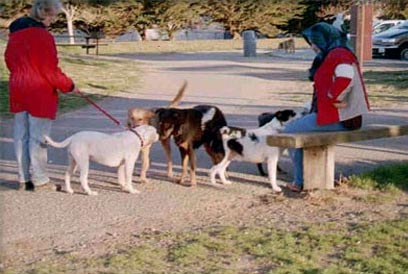
Dogs are pack animals and strange dogs are not part of our family pack. In addition the pack rules are clear. It is the pack leader's job is to drive non-pack members away. If he needs help from lower ranking pack members he asks for it.
If I am on a walk and a stray dog approaches I verbally drive the stray away. If the stray continues to approach I get physical with the offender.
Don't for one minute think that your dog does not see what's going on. Remember, our dogs are very intuitive and they miss nothing.
When you drive strays away, or put yourself between your dog and a second dog he instinctively recognizes this as the actions of a pack leader.
Once you have set your leadership position a strong dog will defer to your rank and allow you to deal with an intruder as a matter of respect. When people have dogs that go crazy at the sight of another dog, that owner's rank has not been properly established with their dog.
People who follow the policy will also have dogs that are less inclined to fight with another dog they accidentally meet when off leash.
I never allow my dogs to socialize with strange dogs. Those people who think they need to socialize their dogs with other dogs are drop dead wrong. These are truly people who don't understand pack structure and rank drive.
Dealing with Stray Dogs
If you do live in an area where there are stray dogs carry pepper spray (bear spray)and gas a dog if it comes close. You can buy it on the internet.
I would also carry a stout walking stick if I had problems with stray dogs.
If the owners of these stray dogs stand there like a deer in the headlights I tell them that I warned them to get their dog under control, I warn them that they need to keep their dog on leash if they don't want this to happen again. I also tell them that I would be happy to tell the police that their dog tried to attack me and my dog and that I was simply protecting myself because I feared for my personal safety. Trust me, police officers always relate to that language.
Gate Doors & Stairs
Going through doors or gates or coming down a set of stairs before your dog is an important part of demonstrating pack leadership. It may not seem like much to us humans but it is a big thing in terms of respect to a dog.
This is why I never allow a dog to go through a door or gate before I do. I also never allow them to charge down stairs ahead of me.
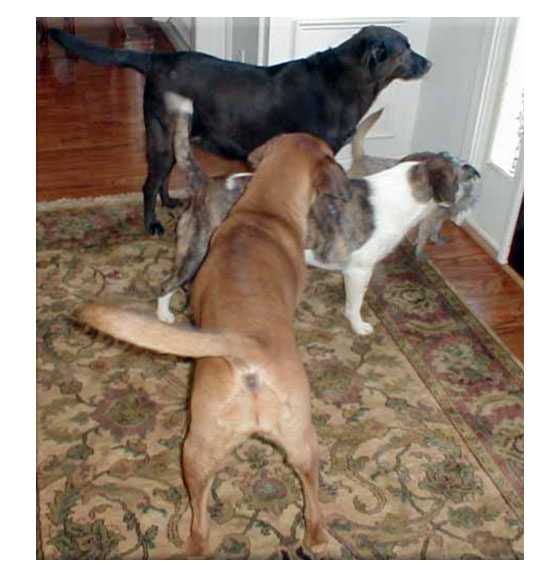
When I have a dog that charges through the doors, I set them up to fail. I open the door just wide enough for the dog's head to get through.
When he tries to force his body through the opening, I have a firm hold on the door and I don't allow the door to swing open wide enough for him to pass. I close the door to the point of trapping the dog's head so he can't pull it out and he can't push his body through the opening. In effect I trap him.
I don't slam his head in the door. In fact I don't put one bit of pressure on the dog's head. All I have to do is hold him in place so he can't go through the door but he also cannot pull his head back out.
When you do this the dog will have a panic attack. You don't have to say one word here. Just hold his head for a few seconds.
You only have to do this 2 or 3 times and they will respect the door as your space not their space.
I teach our dogs that they have to sit before they go through the door to go outside and then sit while I come out, turn and close the door.
This is a black and white exercise for the dog. They clearly understand that they must go to the door and sit before they are allowed out of the house or sit before they are allowed back into the house (or car).
I even occasionally open the door before they sit and offer them the opportunity to stick their head in the door opening. They will always look at me and if dogs could talk they would say "Oh no, I know that silly game."
This work is demonstrated in my Basic Dog Obedience DVD which is also available as a course.
Loose in the House
It can take weeks or even months for a dog to accept "your home" as "his home".
I have noticed it take a longer period of time to settle in for adult dogs that are being re-homed the first time. Dogs that have been in two or more homes adjust much faster.
We never allow a new dog to be unattended and loose in our home when we are gone until it has been with us for a long, long time—like months. In fact we own dogs that are never left unattended in our home.
This does not mean we lock them in a crate for 4 years. It just means that I control our dogs in the home 100% of the time. They start off in the crate and graduate to a dog leash in the home.
So the dog is either in his crate, on leash, or, after formal training, loose in the house. When that happens my eyes are on the dog 100% of the time.
This may fly in the face of other advice you get. But I will be the first person to say "I TOLD YOU SO" when your dog chews up your favorite couch or pees on your brand new carpet while you run down the the corner grocery for a gallon of milk.
I will always remember back to 1972. I had a 1 year old dog that dug her way through the sheet rock in my apartment while I was gone (for 30 minutes). She was well on her way to making an outside doggy door in the siding of the apartment building when I got home.
People who allow dogs out of their crates too soon, or people who bring their new dogs into their homes and don't keep their eyes on their new dogs are the people who send me emails with behavioral problems.
So our approach is to have our crate in the family area. This allows the dog to watch the family going about their daily lives. This seems to speed up the process of teaching the dog that it is now part of our family pack. It also gives the dog a chance to recognize who our family is. That's very important.
Through observation the dog learns about our style of living.
If your new dog is a little shy and over reacts to family members walking by the crate it's a good idea to leave a bowl of all-natural dog treats sitting on top of the crate. When a family member goes by they can drop a dog a treat through the front grate in the door of the crate.
Feeding
One of the most important decisions you make concerning the health of your dog will be what you feed the dog.
We feed all of our dogs a raw all-natural diet. I strongly recommend you do the same.
For the first weeks in our home I am the only one who feeds my new dog and he only gets fed in the crate.This does two things: for dogs with a lot of food drive it provides a positive experience related to the dog crate, it also eliminates the possibility of an issue with food aggression (if the risk for it exists).
In the beginning I always put the food in the crate before the dog is allowed into the crate. I try not to put the dog in and then go and get the food bowl and put it into the crate.
I do it this way because I want the dog to look forward to going into the crate. If the food is not there when I put him in he never knows when he is going to get a nice bowl of food.
Once we start formal obedience training and the dog knows the Sit Command (and this can be weeks after I get the dog) I will change my protocol and make the dog sit before putting the food inside the crate. This follows the theory that "nothing in life is free."
Establishing this control simply adds to your pack leader status.
I never free feed a dog (that's where there is always dry food available). Free feeding is a terrible practice that can lead to FAT dogs.
I never put food down and then fool with the bowl when the dog is eating. I get emails from people who think that taking food away or putting my hand in the food bowl shows the dog that you are the Alpha. These people are dead wrong. It shows the dog that they are an incompetent pack leader and it destroys your bond.
There is nothing wrong with making a dog sit or lay down (if they know the command) before giving them their food. There is also nothing wrong with your eating before the dog eats. But harassing the dog after giving him his food only stresses the dog and hurts your relationship. It's just a really crazy thing to do.
You will not see an Alpha wolf eat its fill, allow lower ranking wolves to eat off a dead deer kill, then come back and drive lower ranking pack members away just because they are tough enough to do it.
Grooming the New Dog
Every day I make an effort to spend 2 or 3 minutes grooming my dog. Pack members groom one another.
When you groom your dog you have to put your hands on him. I have a very soft touch to my hands, which shows the dog that I like him.
If the dog squirrels around because he does not want to stand, then I firmly control him. If I have to verbally warn him and jerk the lead or grab him by the scruff and give a shake (assuming I am not working with a handler aggressive dog) I do it.
The instant he stops squirreling I go back to softly talking to him and stroking him. It's critical that there is a clear black and white difference between squirreling and submitting.
I always end the session by softly brushing and praising him and then releasing him. I use a release command by saying "OK" so he knows we are done. This is very important.
The goal of these sessions is not grooming but rather to start to establish control by showing him that I will control him but when I control him I am nice to him. It just is one more link in the chain of making you a pack leader.
Vaccinations - Don't Vaccinate
We don't vaccinate our dogs. We feel that vaccinations cause more health problems than they fix. What you do with your dog has to be your personal decision. Do your research and see if you come to the same conclusion that we have.
I have an extensive section on our web site about vaccinosis. Over vaccinating a dog causes far more health and temperament problems than the vaccinations were suppose to fix.
Our position is if you feed your dog a healthy all-natural diet his natural immunity will handle almost anything that he runs into.
Too many vaccinations results in dogs with auto-immune or other health problems. I don't respect vets that push these yearly shots for dogs.
Obedience Training vs. Groundwork
Hundreds of thousands of people go through obedience classes each year and after they are done these dog owners are no more of a pack leader than they were before they started classes. The reason for this is obedience instructors do not teach pack structure.
In my opinion formal obedience is only 25% of the solution for dealing with most behavioral problems.The other 75% of the solution requires the owners to correct pack structure and rank issues to solve their behavior problems.
Owners who ignore groundwork or owners who don't give enough thought to their groundwork are often people who end up with dominant and aggressive dogs.
Formal Obedience Training
How one approaches obedience training will vary according to the goals of the owner and the drive and temperament of the dog.
Over the years I have imported more trained Schutzhund dogs than I can remember. The way I approached their obedience training is to assume to assume they knew nothing (even though they were fully trained). I then started their training from scratch and took them through my basic obedience program.
Those dogs that had better training than others went through quickly, those with poor training took longer. In the end they all worked for me because the time spent going through this program taught them what I expected and how I dealt with disobedience.
The reason for starting from scratch was because even though these dogs had previous training, what they had really learned was to mind their previous owner. They now needed to learn to mind me.
This simple concept is why I never recommend sending a dog off to be trained by a professional dog trainer. On a long term basis this almost never works. The dogs only learn to mind the pro but after being home for two weeks they forget what "come" means because the owner does not understand how the dog was trained and what level of correction is required for obedience.
The result is they revert right back to the way they were before they went to the professional. These dogs are not stupid, if the professional would return they would immediately turn into the “nice obedient house pet”. That's because dogs know what you know and they know what you don't know.
Leerburg's Obedience Training Program
The correct way to train a dog is to take them through three phases of training:
- The Learning Phase
- The Distraction Phase
- The Correction Phase
Some people will add that there is a maintenance phase and I agree with them.
In the learning phase, we teach the dog the meaning of a command. We do this by motivating the dog with a toy or food or praise from the handler. Force can also be used, but I NEVER use force in the learning phase.
The learning phase must be done in a distraction free environment (like your kitchen or back yard). I believe that it's counter productive to start training in a dog training center like PetSmart. No untrained dog can focus when there are 10 to 25 other dogs around it. The higher the distraction the less learning takes place.
Remember, the higher the distraction, the less learning takes place.
If you want to take your training to a higher level, enroll in our dog obedience online course. We cover in-depth how to train obedience in your dog raning from housebreaking down to leash training to the basic recall.
Where To Go From Here
With all this said, I hope I have cleared up a few issues on pack structure, obedience training, and the family pet.
If you have further questions go to my website and read some of the other articles I have written on living with dogs, or read some of the thousands of dog training Q&A's. You could also view our training DVDs or our online dog training courses.
In closing I would like to say that a well trained dog always has an owner that is a respected pack leader:
"When we established a meaningful bond with our dog we will both wake up every day wanting to spend time together. Don't ever underestimate the happiness this kind of relationship can bring to your life."






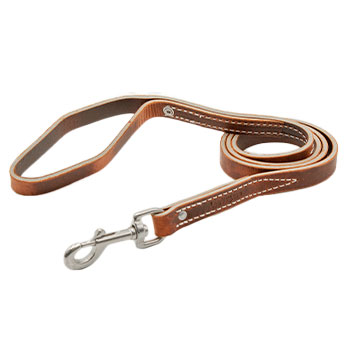

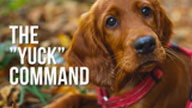
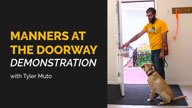
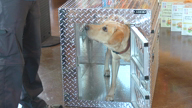
30 Comments
Ask Cindy
Sorry, adding comments is currently disabled.